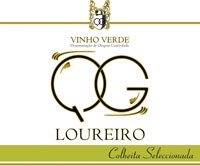
Legend has it that a forlorn woman who was excluded from a harem in Iran drank from one such container. When she awoke from what might have been the first wine buzz known to mankind, she told her brethren about how fantastic it made her feel and what a good night’s rest it afforded her. This event, or something very similar, set the wheels of wine cultivation in motion and they have been spinning for the past 7,000 years.
Almost every culture with a warm enough climate to support sugar-bearing fruit has cultivated alcohol. Whether it was wine, mead or beer, cultivating these fermented beverages marks the period of time between the traveling, hunter-gatherer tribes to what we now refer to as civilized, settled societies.
In moderation, alcohol has the ability to lower inhibitions, spark creativity, lubricate social interactions, induce mild euphoria, ease pain and tension and afford those who’ve been clobbered by the ugly stick a night of action every so often. Even simple organisms such as slugs and fruit flies are attracted to sugar and alcohol.
In medieval Europe, before the days of sanitation, a beverage with alcohol was safer than water due to water-borne illness. For exploring sailors, alcohol-based beverages were often the sole source of hydration. Alcohol also has inherent antiseptic and antioxidant effects, and its medicinal values have been documented as early as 2100 B.C. The downside is that overindulgence sneaks up on the best of us. Consuming alcohol with unbridled enthusiasm leads to loss of coordination, slurring, social incontinence, hangovers and poor decision-making; crushing PBR cans on one’s forehead and diving from the rooftop into the pool sound feasible to those well under the influence.
Mankind is not alone in this dipsomania. Birds have been documented overindulging in overripe, fermented berries and crashing into windshields and storefronts. Bengal elephants once raided a moonshine operation and ate enough sweet mash to induce a raging, drunken stampede that wound up crushing five people to death and trampling seven concrete buildings.
Drinking alcohol releases opioids in the brain, just like the ones released during sex, long runs or severe trauma. These opioids provide temporary relief from physical pain or mental anguish and provide a state of elation. Of course, there are a bazillion ways to achieve the feeling of mild euphoria, but wine is unique. Wine has the ability to bring friends around the table. It makes the perfect companion to food. Before the meal, a lighter wine can be served as an aperitif—stimulating appetite and conversation. After, it can hold the company to the table over a glass of port or Sauternes.

Louis Koppel is sommelier at Spencer’s for Steaks & Chops.